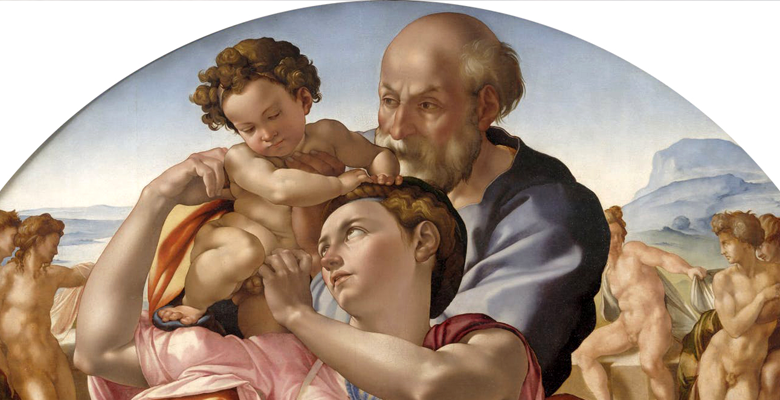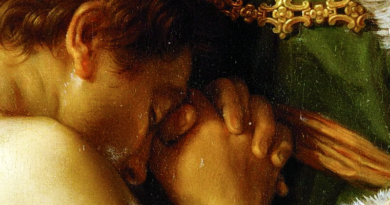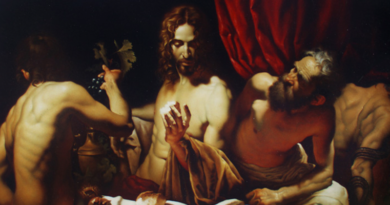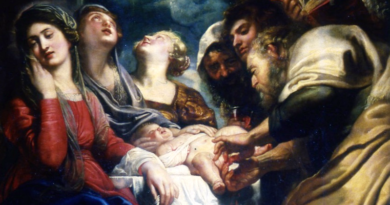Unsolved Mysteries Of Tondo Doni – Holy Family By Michelangelo – The Story Of The Painting
Michelangelo Buonarroti has left us amazing masterpieces and also many questions and unsolved mysteries and symbols in his paintings. Let’s look at one of his Uffizi’s tempera paintings of the Holy Family, or as it is also known – Tondo Doni, and let’s try to figure out what is what and who is who.
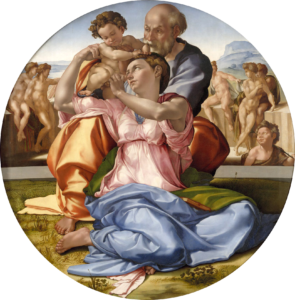 The Holy Family (Tondo Doni) by Michelangelo Buonarroti is the only completed and surviving painting by Michelangelo on wood. It is also believed that Tondo Doni is the only surviving painting painted by Michelangelo without the help of assistants.
The Holy Family (Tondo Doni) by Michelangelo Buonarroti is the only completed and surviving painting by Michelangelo on wood. It is also believed that Tondo Doni is the only surviving painting painted by Michelangelo without the help of assistants.
Angolo Doni. Wedding. Money
Agnolo Doni, a prosperous Florentine cloth merchant, commissioned a painting for his wedding with Maddalena Strozzi who comes from the respected Strozzi family, a longtime rival of the Medici family. Maddalena was 15 years old at the day of the wedding.
The work on the painting probably started after Doni’s marriage, which took place in 1503, and completed before Michelangelo began painting the Sistine Chapel in 1508.
An interesting story is told about the payment for the painting. When commissioning Michelangelo with this painting, Doni and Buonarroti agreed on a price of eighty ducats (approx. €20000 in today’s price of gold). But when Doni received the painting he decided to pay Michelangelo half the agreed price. Of course, Michelangelo threatened to take the painting back, so Agnolo Doni had to pay the agreed amount.
Right after receiving from Michelangelo the Holy Family (Tondo Doni), Angolo Doni has also commissioned Raffaello to paint portraits of his young wife and himself.
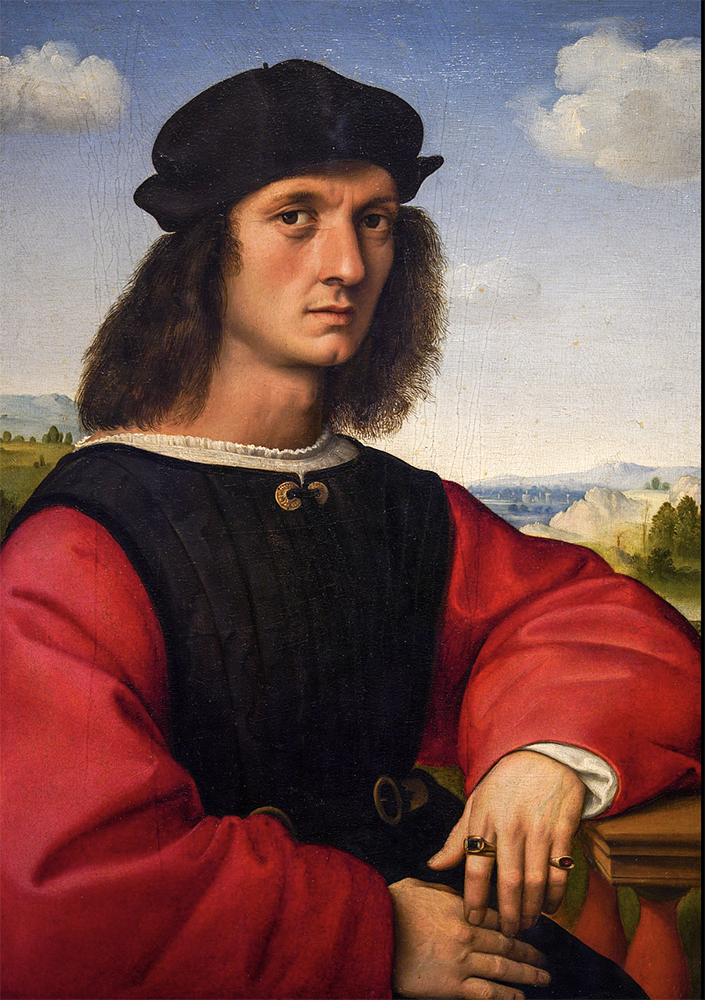
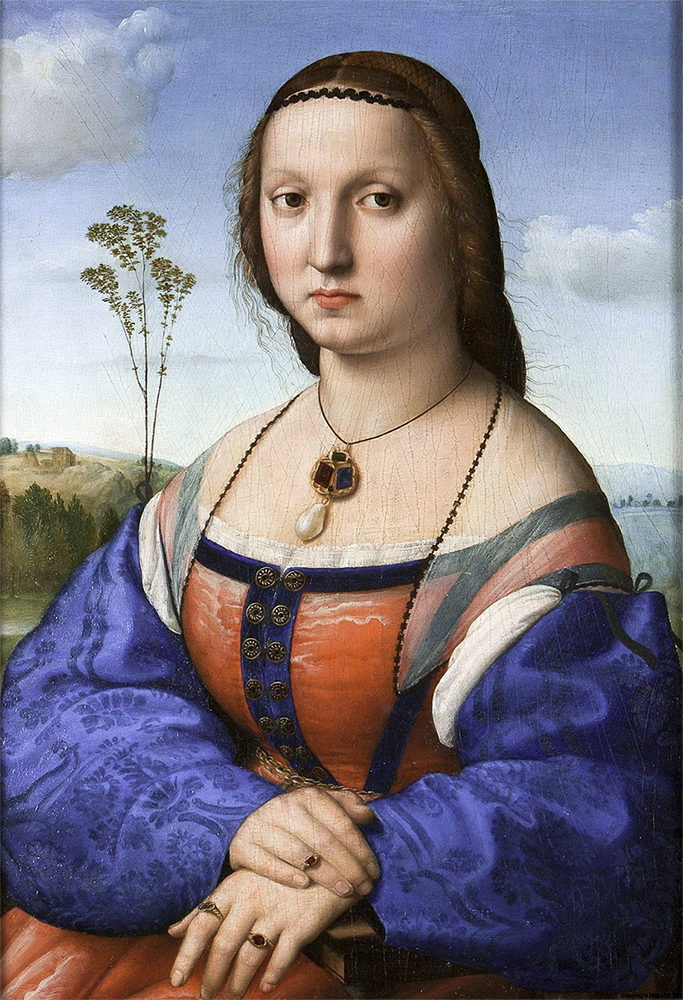
Tondo
Tondo (in Italian “circle”) is a round shape of a painting and it was quite popular in Florence during the Renaissance. The height of the Holy Family (Tondo Doni) is slightly bigger than its width (91cm x 80cm/ 35.8″ x 31.5″), so it is not really a circle. Maybe this was the reason that Doni wanted to pay only half of the agreed price?
Interesting is that the circular format of paintings was very much appreciated by Florentines for domestic devotional furnishings. Of course, Michelangelo was one of the first to experiment and study the potential of a canvas in a shape of a circle.
Among all painting formats, the round format (tondo) is considered more philosophical and harmonious. The rectangular format is more common, as it creates optimal conditions for the direction and dynamism of the composition. The square format expresses symmetry, balance, and tectonicity more than others, which is why it is very often used in architecture. The round format ideally expresses isolation, staticity, centricity, and, in a philosophical sense, the ideality and harmony of the world. And only the triangular format of the picture is extremely rare because it carries aggression.
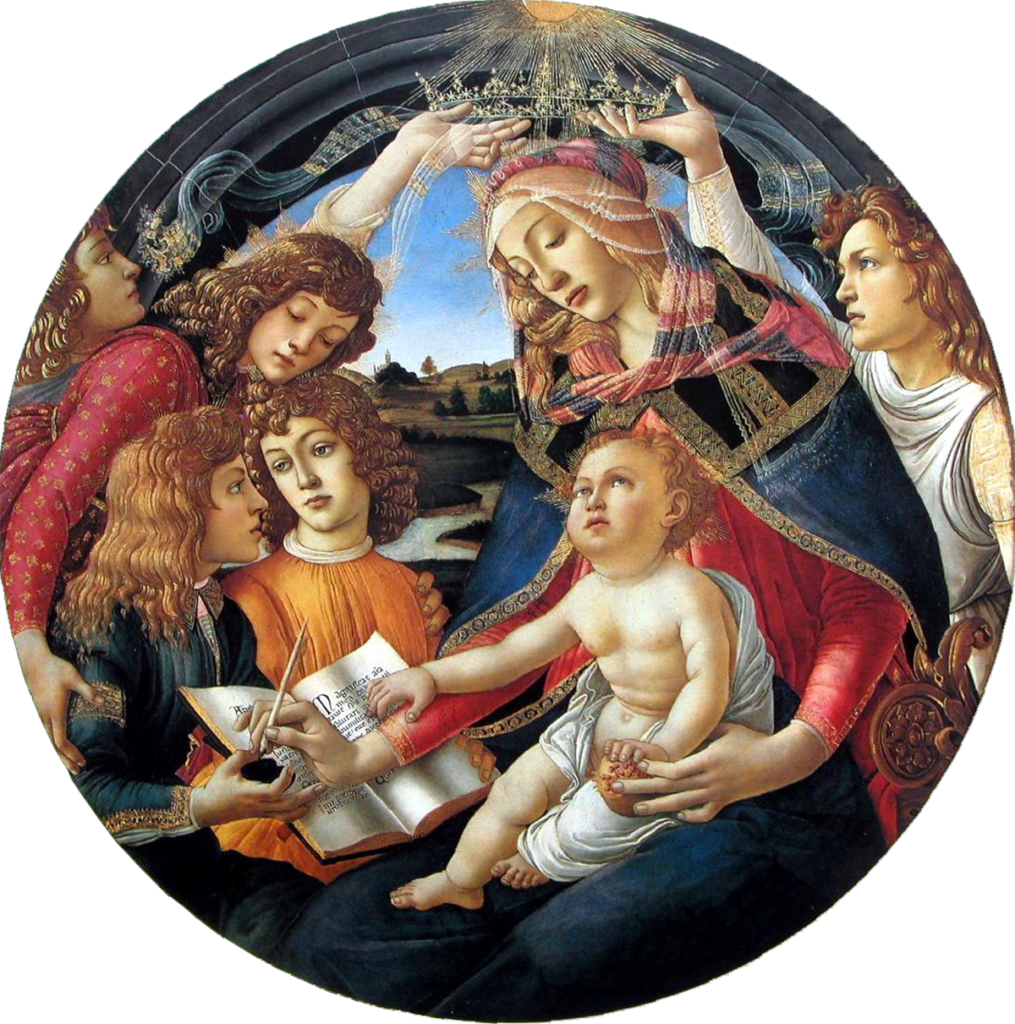
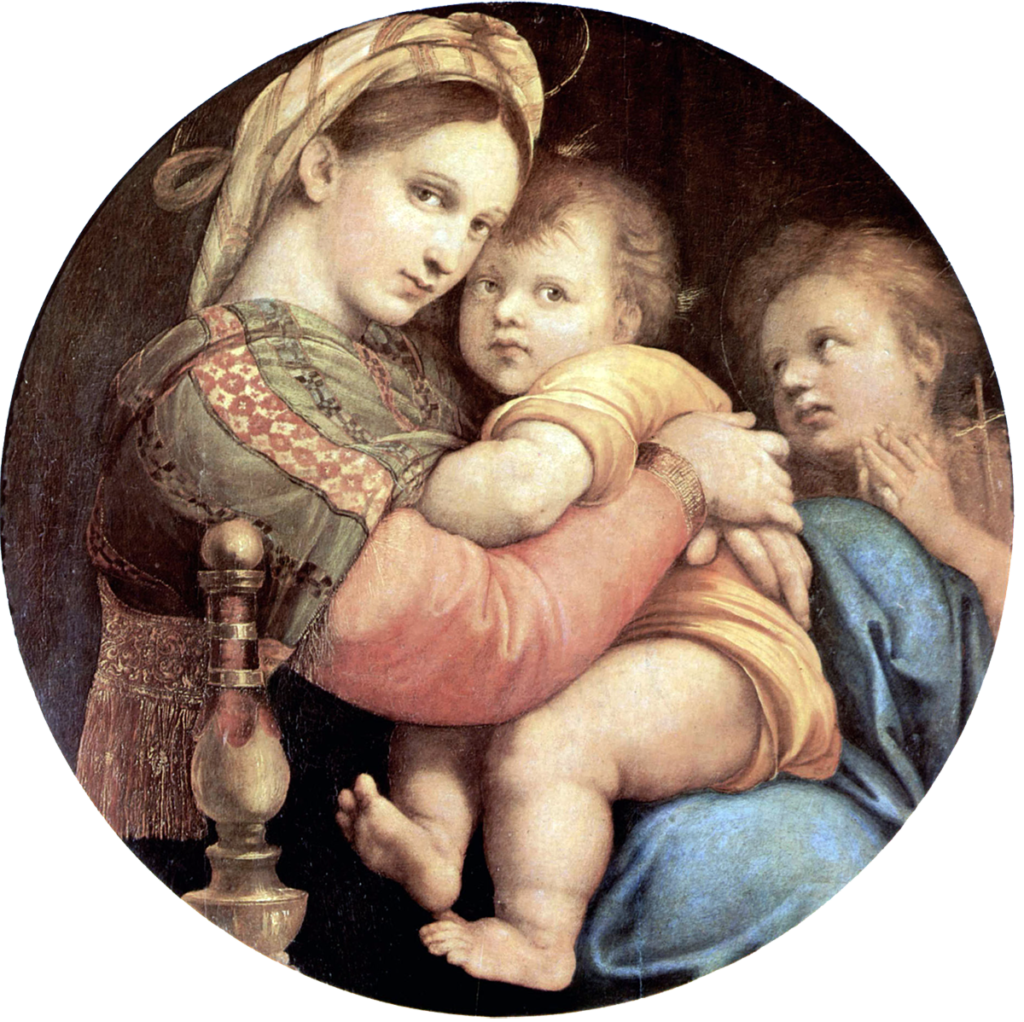
Holy Family
Baby Jesus, Mary and Joseph. The Holy Family. Their figures are intertwined with each other. Mary’s arm is rested on Joseph’s knee, the baby’s fingers grabbed his mother’s hair. In a strange way, Joseph hands the child to Mary over her right shoulder while Mary is sitting on the ground between Joseph’s knees. Or is Mary giving Jesus to Joseph as a symbolic act?
A composition like this would be seen as very strange and a bit inappropriate at any scared art school. Interesting is that some scholars believe that this gesture of “giving” Jesus from one person to another in the painting is a hint to the last name of the client who commissioned the painting – Doni (from Italian “donare” – to give, “i doni” – the gifts).
Also an interesting observation is that their positions in the composition resemble a very Tuscan tradition for a painting – the father is always in the back and a bit further away.
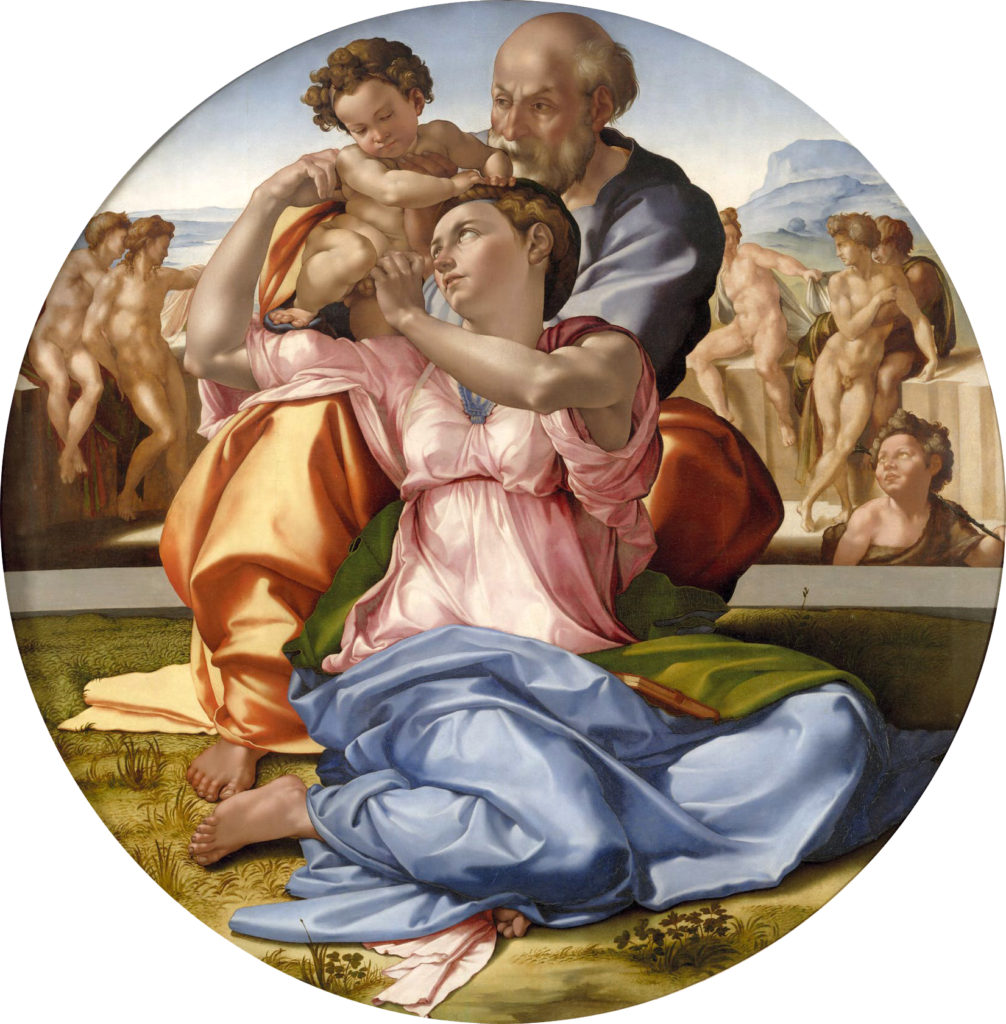
Naked Men, Apollo Belvedere & Clover
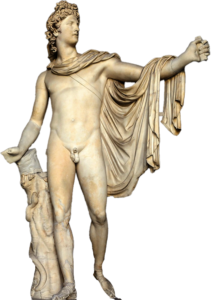 In addition to all these questions to Mary and Joseph – who is giving the baby to whom? – there are other unsolved mysteries, both in the background and in the foreground.
In addition to all these questions to Mary and Joseph – who is giving the baby to whom? – there are other unsolved mysteries, both in the background and in the foreground.
For instance, it is no clear who are these naked men in the background, sitting on the stone wall. Some scholars say these are angels, others believe that these men are a symbol of a non-Christian world or sinners, undressed and waiting to be baptized – and the little John the Batist is also there, as a child, hiding behind the grey line.
These nude men may or may not have a symbolic meaning. Or maybe they are just a background that Michelangelo loved so much, and naked men in Michelangelo’s paintings are also nothing new, knowing the rumors about his sexual preferences. Also, a very ironic way to make a wedding painting for Doni and his wife and putting naked men in the painting.
However, in one of the figures of these men the scholars see Apollo Belvedere, the statue that was discovered right around the time when the painting was in creation process.
Almost in the middle of the picture there is a horizontal line, bringing the group of participants to the foreground and separating it from the characters in the background. The line seems to be the embodiment of the idea of an enclosed garden, which often symbolized the purity of Mary.
Not clear is also the symbol of the clover in the foreground. In Christian iconography the clover often symbolizes the Holy Trinity.
The Holy Family (Tondo Doni) is exhibited at Uffizi Galleries in Florence, together with two Raffaello’s portraits of Doni and Maddalena.
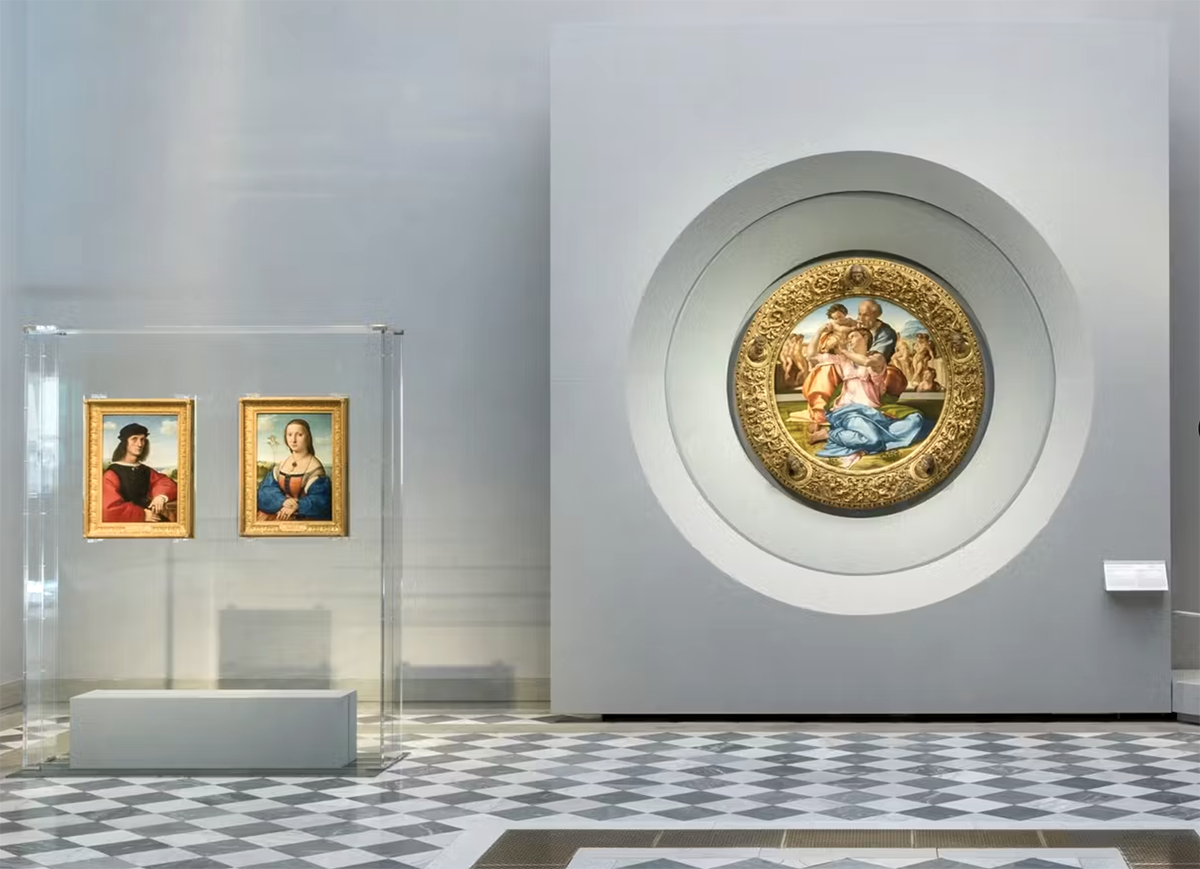

Dimitri Ross
Dimitri Ross, a contemporary figurative visual artist. Based in Florence, Italy. Currently he masters the academic painting and sacred art in Florence by deepening his artistic research on painting techniques of the Italian Renaissance.


